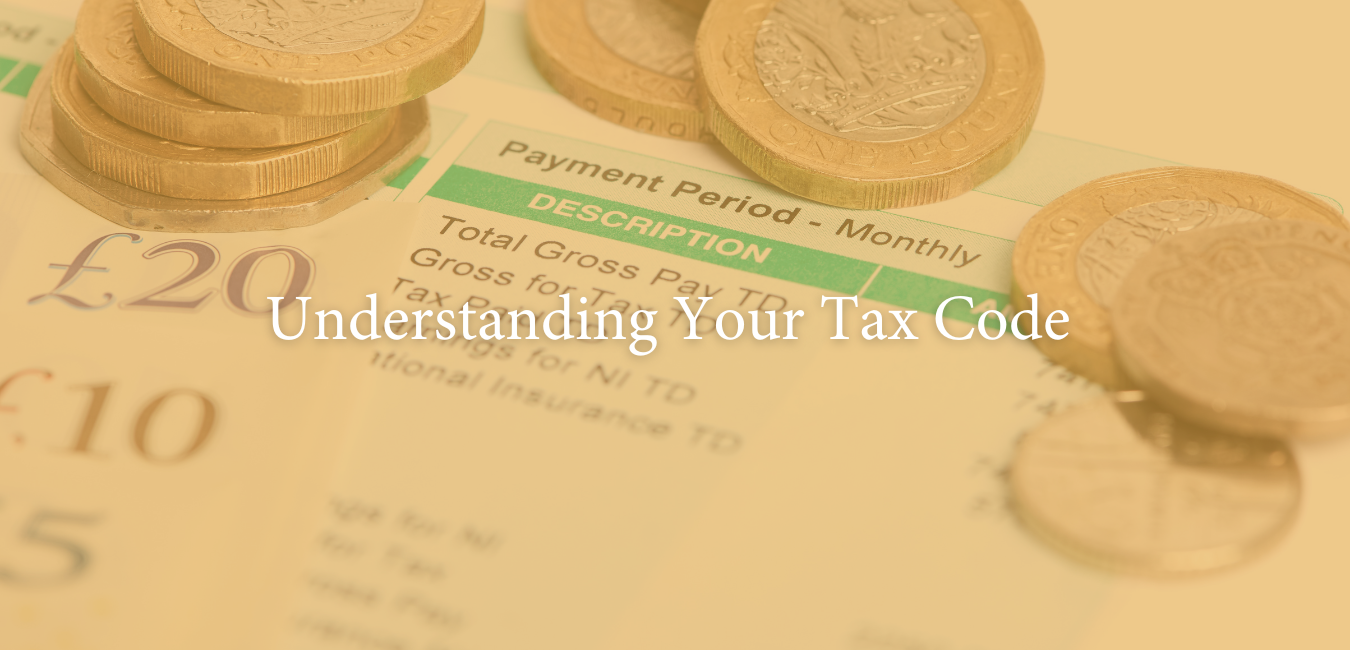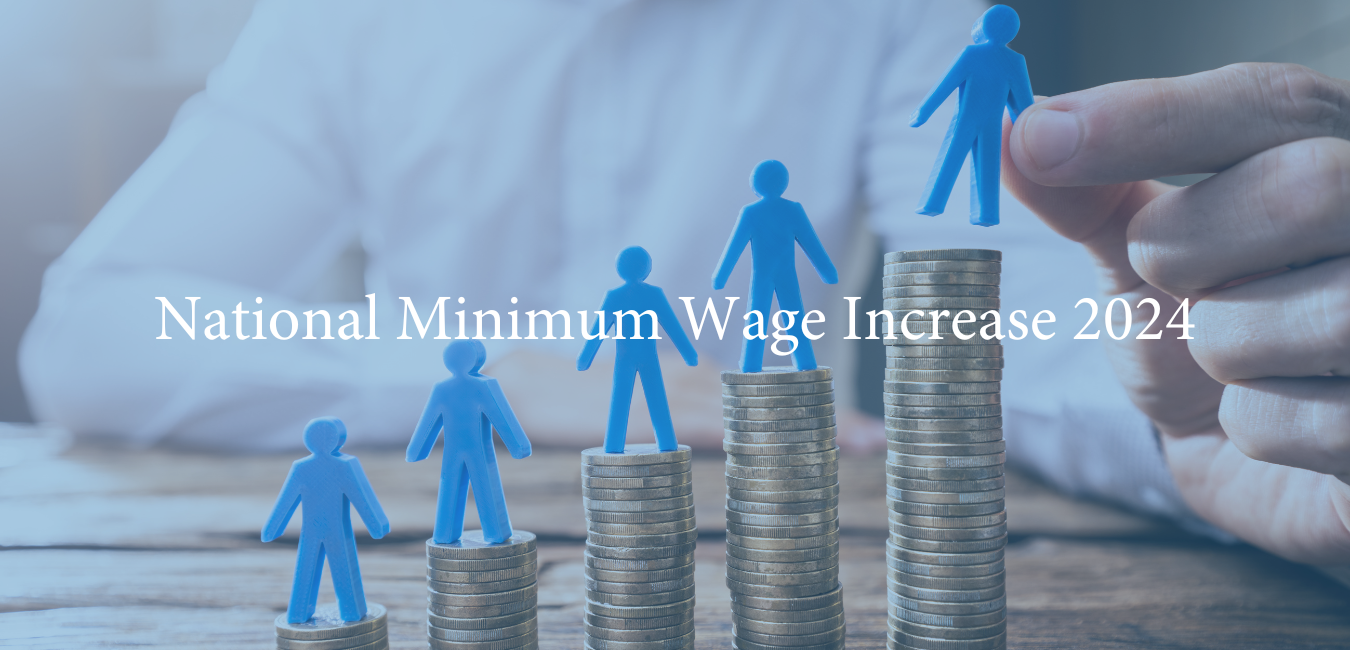Understanding Your Tax Code
Tax codes are used by employers and pension providers to show how much income tax you’ll have to pay on your salary or pension. Your tax code will be provided to you by HMRC and can be found in a number of ways.
What does a Tax Code look like?
Your tax code is made up of one letter and three or four numbers. The numbers are used to identify the personal allowance amount that you’re entitled to for that tax year depending on your working situation.
Checking your Tax Code
A tax code is usually shown on your payslip, alongside your pay or pension information. It will also be on the coding notice you might receive from HMRC, the P60 you get after the end of the tax year and the P45 if you change jobs.
Those numbers and letters that you see on your payslip are important. Being on the wrong tax code, means you are either paying too much or too little tax.
Who receives a Tax Code?
Tax codes are issued on employment and pension income. As a result, both employees and pensioners will receive at least one code.
HMRC issue the code to your employer, which informs your employer how much tax to deduct. This will then show on the employees pay slip.
When are tax codes issued?
Coding notices are typically issued between January and March each year. They are then applied to the income for the following tax year, which starts 6 April.
What do the numbers on your tax code mean?
Every individual starts with a personal allowance, which is your tax-free earnings amount. In the current tax year 2023/24 the tax-free amount is
£12,570.
The numbers on the code refer to how much tax-free income can be received. HMRC drop the last digit when applying it to the tax code.
1257L is the tax code currently used for most people who have one job or pension.
What do the letters on your tax code mean?
L You’re entitled to the standard tax-free Personal Allowance
M Marriage Allowance: you’ve received a transfer of 10% of your partner’s Personal Allowance
N Marriage Allowance: you’ve transferred 10% of your Personal Allowance to your partner
T Your tax code includes other calculations to work out your Personal Allowance
0T Your Personal Allowance has been used up, or you’ve started a new job and your employer does not have the details they need to give you a tax code
BR All your income from this job or pension is taxed at the basic rate (usually used if you’ve got more than one job or pension)
D0 All your income from this job or pension is taxed at the higher rate (usually used if you’ve got more than one job or pension)
D1 All your income from this job or pension is taxed at the additional rate (usually used if you’ve got more than one job or pension)
NT You’re not paying any tax on this income
S Your income or pension is taxed using the rates in Scotland
S0T Your Personal Allowance (Scotland) has been used up, or you’ve started a new job and your employer does not have the details they need to give you a tax code
SBR All your income from this job or pension is taxed at the basic rate in Scotland (usually used if you’ve got more than one job or pension)
SD0 All your income from this job or pension is taxed at the intermediate rate in Scotland (usually used if you’ve got more than one job or pension)
SD1All your income from this job or pension is taxed at the higher rate in Scotland (usually used if you’ve got more than one job or pension)
SD2 All your income from this job or pension is taxed at the top rate in Scotland (usually used if you’ve got more than one job or pension)
C Your income or pension is taxed using the rates in Wales
C0T Your Personal Allowance (Wales) has been used up, or you’ve started a new job and your employer does not have the details they need to give you a tax code
CBR All your income from this job or pension is taxed at the basic rate in Wales (usually used if you’ve got more than one job or pension)
CD0 All your income from this job or pension is taxed at the higher rate in Wales (usually used if you’ve got more than one job or pension)
CD1 All your income from this job or pension is taxed at the additional rate in Wales (usually used if you’ve got more than one job or pension)
Emergency Tax Codes
If your tax code has ‘W1’ or ‘M1’ or ‘X’ at the end these are emergency tax codes.
Emergency tax codes are temporary. HMRC will usually update your tax code when you or your employer give them your correct details.
If your tax code has a ‘K’ at the beginning
Tax codes with ‘K’ at the beginning mean you have income that is not being taxed another way and it’s worth more than your tax-free allowance.
For most people, this happens when you’re:
- paying tax you owe from a previous year through your wages or pension
- getting benefits you need to pay tax on - these can be state benefits or company benefits
Income over £100,000
Your Personal Allowance goes down by £1 for every £2 that your adjusted net income is above £100,000. This means your allowance is zero if your income is £125,140 or above.
What if I have more than one tax code?
You'll have more than one tax code if you have more than one job or pension. For example, say you have 2 employments and 2 private pensions. As each has its own code you will have 4 tax codes.
How do employment benefits affect your code?
Receiving taxable employment benefits will reduce your personal allowance. As a result, the number on your code will also reduce.
Your tax code may be used to collect tax on benefits from your employment, such as a company car, accommodation, loans or medical insurance. Your employer should give you a copy of your form P11D for your records. You must keep these details for two years after the tax year they relate to.
Tax-free allowances
Tax-free allowances can affect the amount of income you receive, and therefore how much tax you must pay.
These can include:
- Personal allowance
- Blind person's allowance
- Pension contributions
- Gifts to charity
- Interest payments on qualifying loans
What should you do if you have an incorrect tax code?
An incorrect code means that the incorrect tax is being taken. You are either paying too much tax or too little tax, neither situation is desirable so the sooner you act the better.
If you think your tax code is wrong, you can use the check your Income Tax online service to update your employment details and tell HMRC about a change in income that may have affected your tax code.
Updating your tax code
In most cases, HMRC will automatically update your tax code when your income changes. They’ll usually get this information from your employer.
If HMRC has the wrong information about your income, you may be given an incorrect tax code. To correct your tax code, make sure HMRC has up-to-date details about your income.
Menu
Get In Touch
Tel: 01733 247500
Email: admin@ggmaccountancy.co.uk
Office: Unit 12, Broadway Shopping Centre
Malting Square, Yaxley, Peterborough
PE7 3JJ
Sign Up To Our Newsletter
Contact Us
We will get back to you as soon as possible
Please try again later
Proud Partners Of
Menu
Get In Touch
Tel: 01733 247500
Email: admin@ggmaccountancy.co.uk
Office: 42 Tyndall Court, Commerce Road
Lynch Wood, Peterborough, PE2 6LR
Follow Us On Social Media
Sign Up To Our Newsletter
Contact Us
We will get back to you as soon as possible
Please try again later
All Rights Reserved | GGM Accountancy Ltd | Website designed by Onelink Media









